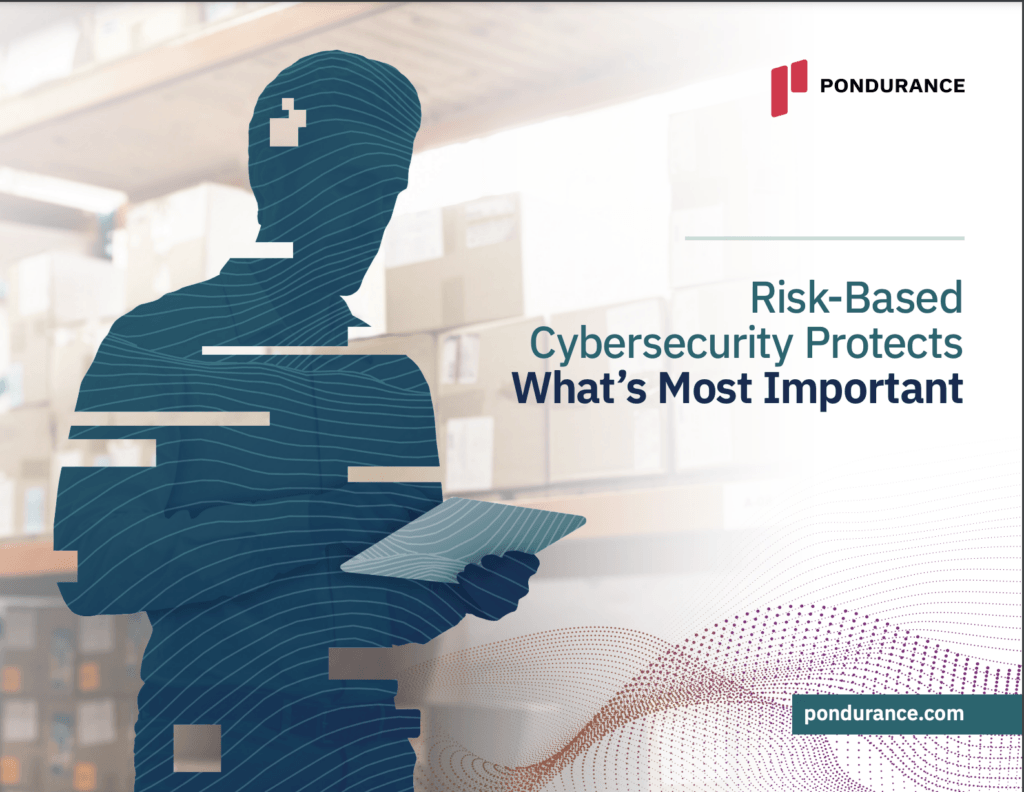Our privacy policy is located here.
Risk-Based Cybersecurity
Your cybersecurity approach should align with your company’s objectives, outcomes, and risks — making a risk-based approach to cybersecurity the best strategy for your business.
The Pondurance Risk-Based Approach Helps Organizations Manage Risk Under the NIST Risk Management Framework
Defend What's Most Important
With a Risk-Based Cybersecurity Approach

Learn more about our risk-based approach, and dynamic defense methodology
Dustin Hutchison, Ph.D.
Protect What Matters Most with Risk-Based Cybersecurity
Pondurance — the first and only MDR provider to be built around a risk-based approach — believes a risk-based approach is the best way to protect clients from threats and reduce their exposure to attacks.

Learn more about a risk-based MDR approach
an Interview with ISMG and Doug Howard



NIST Risk Management Framework
When considering steps for cybersecurity risk management, one cannot do so without keeping in mind the framework of the National Institute of Standards and Technology (NIST). The NIST Risk Management Framework is a rigorous and robust strategy, crafted meticulously to counteract, mitigate, and respond to risks that could threaten operational continuity.
The intriguing attributes of the NIST risk management framework are its impartiality, transparency, and consistency. It is crucial to understand that this framework insinuates an optimal security posture for organizations, irrespective of their size or sector. Devised on principles of cyber risk and resilience management, NIST fosters an interactive approach to armoring systems against multifaceted cyber threats.
When one ponders upon what is the NIST risk management framework, it is essential to spotlight its core facets – a six-step iterative process outlining identification, protection, detection, response, and recovery. Stimulating a dynamic risk management method, the framework allows for ongoing updates and improvements compliant with evolving threats and business requirements.
In the world of cybersecurity management, NIST compliance channels a secure route. Accommodating an uncompromising compliance regime, it benchmarks high-security standards. However, the journey towards NIST compliance can certainly be complex, when navigated alone. Here, Pondurance, one of the top cybersecurity companies and a luminary in managed detection and response, positions itself as a reliable guide, bridging the gap between safety protocols and their effective implementation. Providing a fluid transition to NIST compliance, Pondurance offers professional expertise and ongoing support in cyber risk management, threat intelligence, and informed security.
The application of a risk-based cybersecurity approach, integrated into the NIST risk management framework, is perhaps its most commendable facet. Rather than operating reactively, organizations using this approach can proactively identify and mitigate potential vulnerabilities, bolstering their overall defense against cyber threats, data breaches, and potential impacts.
In sum, adopting the NIST risk management framework and tailoring its strategies to the specific needs of an organization can bolster cybersecurity resilience. With no room for complacency in an ever-evolving threat landscape, turning to proven risk management methods, and trusted partners like Pondurance can be pivotal in achieving this aim.
Understanding NIST Risk Management Framework Steps
The National Institute of Standards and Technology (NIST) Risk Management Framework, or RMF, can appear complex, encrusted with intricate technical jargon. This narrative endeavors to simplify the knowledge, presenting the framework’s components and functionalities in a more comprehensible manner, revealing its critical necessity in managing cybersecurity risks.
Central to the NIST RMF are various interrelated steps, which ensure a comprehensive approach to assessing, responding to, and monitoring risk. The core procedures start with categorizing the system, followed by selecting, implementing, and assessing security controls to tackle the identified risks, thereby aiding in cyber risk management and vulnerability management. The fifth stage involves authorizing the system in light of the risk assessment, and subsequently, continuous monitoring is carried out to ensure the risk posture remains optimal and to protect sensitive data.
Understanding the NIST risk management framework steps is crucial in maintaining state-of-the-art security controls commensurate with the severity of risk impacting an entity’s operations. Categorizing the system involves identifying the impacts on organizational operations, assets, and individuals if a system or application were to be compromised, hence addressing potential threats and cybersecurity threats. After identifying the potential impacts, security controls are then selected based on the defined system and environmental factors, aligning with a risk management strategy.
Successful implementation of these security controls requires the NIST CSF steps. NIST CSF, or Cybersecurity Framework, abets organizations in managing and reducing cybersecurity risk, enhancing their ability to anticipate, prevent, and respond to cyber threats, thereby facilitating cyber threat assessment and threat intelligence. Its function is pivotal to the NIST RMF’s effectiveness, introducing a risk-informed, outcome-oriented approach to supervising cybersecurity risk.
Pondurance’s role in the NIST risk management framework is indispensable. By providing robust cybersecurity solutions, it assists in implementing and managing the framework across enterprises. With seasoned expertise, Pondurance guides through the process of understanding, selecting, and implementing security controls in alignment with the NIST CSF steps, hence bolstering security teams and informed security. Aided by Pondurance, entities can become adept at managing their cybersecurity risks, enhancing their security posture and resilience against data breaches and potential impacts. Pondurance’s contribution to maintaining and enhancing this critical relationship underscores the holistic approach required in contemporary cyber risk management.
NIST Risk Management Certification
Delving into the complex universe of cybersecurity protocols, the National Institute of Standards and Technology (NIST) risk management framework emerges as an effective methodology. This pioneering approach is designed to help organizations manage both cybersecurity and privacy risks to foster informed decision making. With its thoughtful arrangement of risk management processes, the NIST framework serves as a brocade of best practices that set the standard for cybersecurity firms worldwide.
Among the myriad cybersecurity services on offer, Pondurance stands out for its ability to help firms remain compliant to the NIST CSF. Through its backbone of techno-savvy professionals, Pondurance’s alignment with NIST helps in the development of robust cybersecurity strategies. With a compartmental approach considering all sub-components of an organization, they recognize the importance of cybersecurity as a whole, rather than focusing on individual operational silos.
When it comes to gaining a comprehensive understanding of the NIST risk management framework, certification and training programs play an irreplaceable role. NIST risk management framework training programs offered by recognized institutions impart a strategic orientation toward addressing cybersecurity challenges. These programs lay the groundwork to understand different risk-related scenarios and generate synergies between teams while deal with risks arising in the cyberspace.
The value of NIST risk management framework certification cannot be overstated. This certification represents more than just a qualification. It symbolizes an individual’s commitment to upholding and advancing the highest standards in cybersecurity. It’s a testament to one’s capability to comprehend and successfully apply the NIST framework in real-world scenarios.
Moreover, it’s not just about individual capability. When an entire firm pursues NIST certification, it tangibly boosts the firm’s internal safety processes and external credibility. Just as Pondurance has successfully done, leveraging NIST certifications can inevitably lead to nurtured client trust and a strengthened competitive position in the market.
In an increasingly volatile cyber landscape, having a robust incident response strategy is crucial. This also forms a core aspect of the NIST framework that Pondurance regularly addresses. Providing a roadmap for dealing with cybersecurity incidents, the NIST incident response guide ensures businesses can swiftly and systematically address threats, minimizing downtime and data loss. As the digital world becomes more complex, strategies like these, rooted in globally recognized principles, will be the key to thriving in the future landscape of cybersecurity.
Enhancing Cybersecurity Resilience Through NIST Frameworks and Expert Consultation
In today’s rapidly evolving digital landscape, safeguarding sensitive information and critical infrastructure from cyber threats is paramount for organizations of all sizes. Implementing robust cybersecurity measures is no longer a choice but a necessity to mitigate cyber risk effectively. One key framework that sets the standard and provides a solid foundation for a comprehensive cybersecurity program is the NIST (National Institute of Standards and Technology) risk management framework.
The NIST framework offers a structured approach to managing cybersecurity risks by providing guidelines, best practices, and standards that organizations can use to improve their cybersecurity posture and vulnerability management. By adopting the NIST framework and tailoring its strategies to meet the specific needs of an organization, companies can significantly enhance their cybersecurity resilience and cyber risk management strategy.
However, merely implementing a framework is not enough. What sets leading cybersecurity firms apart is their proactive and consultative approach towards risk management. Pondurance, one of the top cybersecurity companies, goes beyond simply aligning their clients’ programs with NIST standards. They take a holistic, risk-based approach to ensure that their clients focus on the most critical areas based on their unique environments and business objectives, thereby addressing potential threats and sensitive data breaches.
Pondurance’s tailored solutions involve marrying the time-tested principles of the NIST framework with customized strategies to help companies align their cybersecurity initiatives with their overall business goals. By providing expert consultation and a deep understanding of each client’s specific challenges and requirements, Pondurance helps organizations proactively identify and address cybersecurity threats, including cyber threats and information systems vulnerabilities, before they escalate into major incidents.
In today’s threat landscape, there is no room for complacency. Organizations must stay ahead of emerging cyber threats by implementing proven risk management methodologies and partnering with trusted experts like Pondurance. By working collaboratively with Pondurance to implement the NIST framework and customized solutions, companies can strengthen their cybersecurity posture and better protect their sensitive data and critical assets against potential threats and cyber threat assessments.
In conclusion, by leveraging the NIST risk management framework and the expertise of a reputable cybersecurity partner like Pondurance, organizations can fortify their defenses and effectively mitigate cybersecurity risks. This proactive and consultative approach not only helps companies align their cybersecurity efforts with their business objectives but also ensures that they are well-prepared to face the evolving cybersecurity challenges of today’s digital world.
